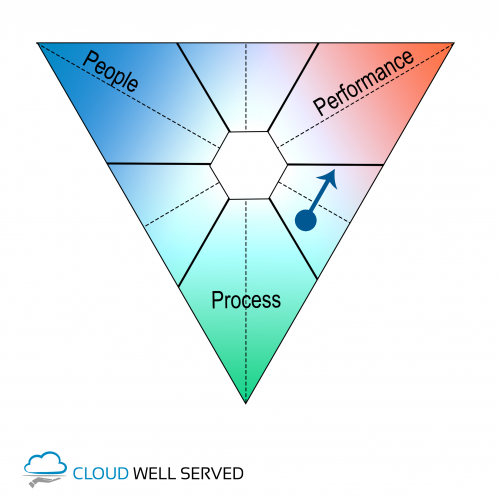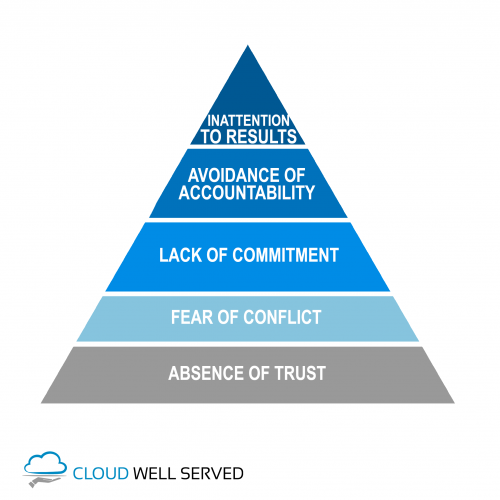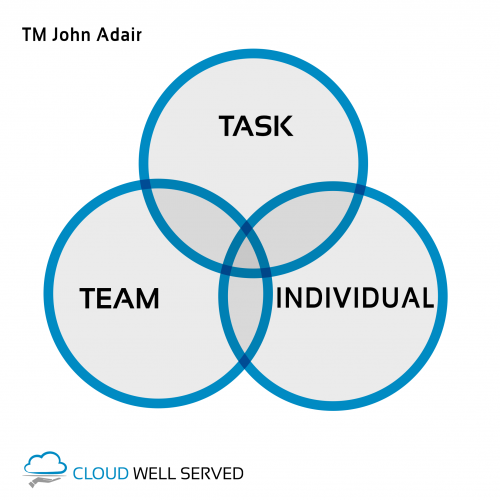My attitude to coaching is rather skeptic, it is always very difficult for me to find some valuable materials about it. There are few good positions thought, that can bring some real benefits. Recently I participated in a leadership training where I found good quality examples and great practical experience. I will share my short notes with some of the simplified key concepts and models I have learned.
Know yourself
Process of becoming a great leader starts from getting to know yourself, understanding what drives you and how you behave in stressful situations. One method how to do it is the Strengths Deployment Inventory.
Strengths Deployment Inventory (SDI)
SDI is an instrument for self-awareness, that shows what are your core values, motivators and how you are dealing with conflicts.
After answering series of simple questions, method positions you on SDI matrix, somewhere in variety of three types of personalities:
- People oriented – being open and responsive to the needs of others, helping others and ensuring that they reach their full potential.
- Performance oriented – competing for leadership and responsibility, striving for immediate actions.
- Process oriented – objective, practical and cautious, thinking things before acting.

People rarely are just one of the mentioned characters, you are probably a mix of them.
SDI also tries to show how you behave in conflict. The blue arrow in SDI matrix represents motivators that you experience when you struggle with other people. For example, in conflict you can become more people oriented, trying to appease the dispute by all means, or in contrary – performance oriented, taking all necessary steps and fight for the cause.
Most of you are probably already aware how you behave and what motivates you, but if you are curious you can take the assessment here. The SDI suggests ways that one’s personal strengths may be used to improve relationships with others. You can check you how to interpret you results on this page.
The team
To be a leader you have to understand essential characteristics of high performing team and be able to support it during its creation. Building a team goes through various stages, from forming, through norming to performing. To have the high results team has to include following components:
- The common purpose – what would be the team without a common task? The team is defined by it and exists to fulfill its mission.
- Roles – as I mentioned in previous chapter people have different strengths and motivators and should be aligned with different business functions. The more diverse the team is, the more they are likely to be stronger in wider range of goals.
- Accepted leadership – team must be lead by a person with a vision, that other team members will also believe and have full trust in.
- Effective processes – will ensure the team have framework to achieve the goal. Processes should be balanced, adjusted to team purpose, size and place in work environment. It is worth to start creating processes from the beginning, but keep in mind that to much processes can impact efficiency.
- Solid relationships – members should trust each other and have mutual respect. Remember, they doesn’t have to be friends, but activities like team building will strengthen bounds between them.
- Communication – it may seems obvious that team must communicate but this is the part that I usually see a lot of gaps. It doesn’t have to be always lack of communication, sometimes it is over-communication, driven by frustration and conflicts.
Now, when we know how should high performing team looks like, lets take a look on what gets in the way of team performance and where the manager can influence. Common sense framework with the Five Dysfunctions of a Team was created by Patrick Lencioni. It shows how one dysfunction can be an origin of another. Outside spectators see only lack of results, whereas problem lays in avoidance of accountability or lack of commitment. In the end he comes with a kind of cliché conclusion, that everything should be build on trust. More values we can get when we actually look at deeper explanation what it actually means and suggestions how to improve your team performance.

Leadership
Every group will expect its leader to have certain qualities, that will vary among teams. There is not, however, a standard mix of qualities to make a perfect leader in all situations. It is therefore important to look at the actions a leader has to take to be effective. Leader responsibilities are:
- to achieve the task,
- to develop individuals,
- to build the team.
Neglecting in one area will affect the others and prevent the job being done as effectively as it could be. John Adair presented this approach in his Action Centered Leadership. The three circles show that these all elements should overlap. The model proposes that to be a good manager or leader you must have command of, and make use of, all three aspects of the model.

Your responsibilities for achieving the task
- Set goal of the team.
- Identify the vision and direction.
- Choose roles and resources (people, processes and tools).
- Create the plan to achieve the task – deliverable, measures, timescales and tactics.
- Establish responsibilities and accountabilities.
- Monitor team performance and report on progress towards the team overall aim.
Your responsibilities for managing the team
- Establish standards of performance and behavior.
- Agree on these standards and then see that they are properly communicated.
- Monitor and maintain discipline, integrity, and focus.
- Anticipate and resolve group conflicts.
- Facilitate effective internal and external communication.
- Keep your team motivated towards its overall goal.
- Give and seek feedback.
Your responsibilities for managing the individual
- Appreciate the personality, skills, strengths, needs, aims, and concerns of individual team member.
- Assist individuals in their own development.
- Adjust individual responsibilities and objectives.
- Provide of recognition and praise as well as constructive criticism.
- Reward superior performance with extra responsibility, status, etc.
- Develop freedom and authority for individuals.
Reference Materials
Total SDI page
Leadership styles
Easter Egg
